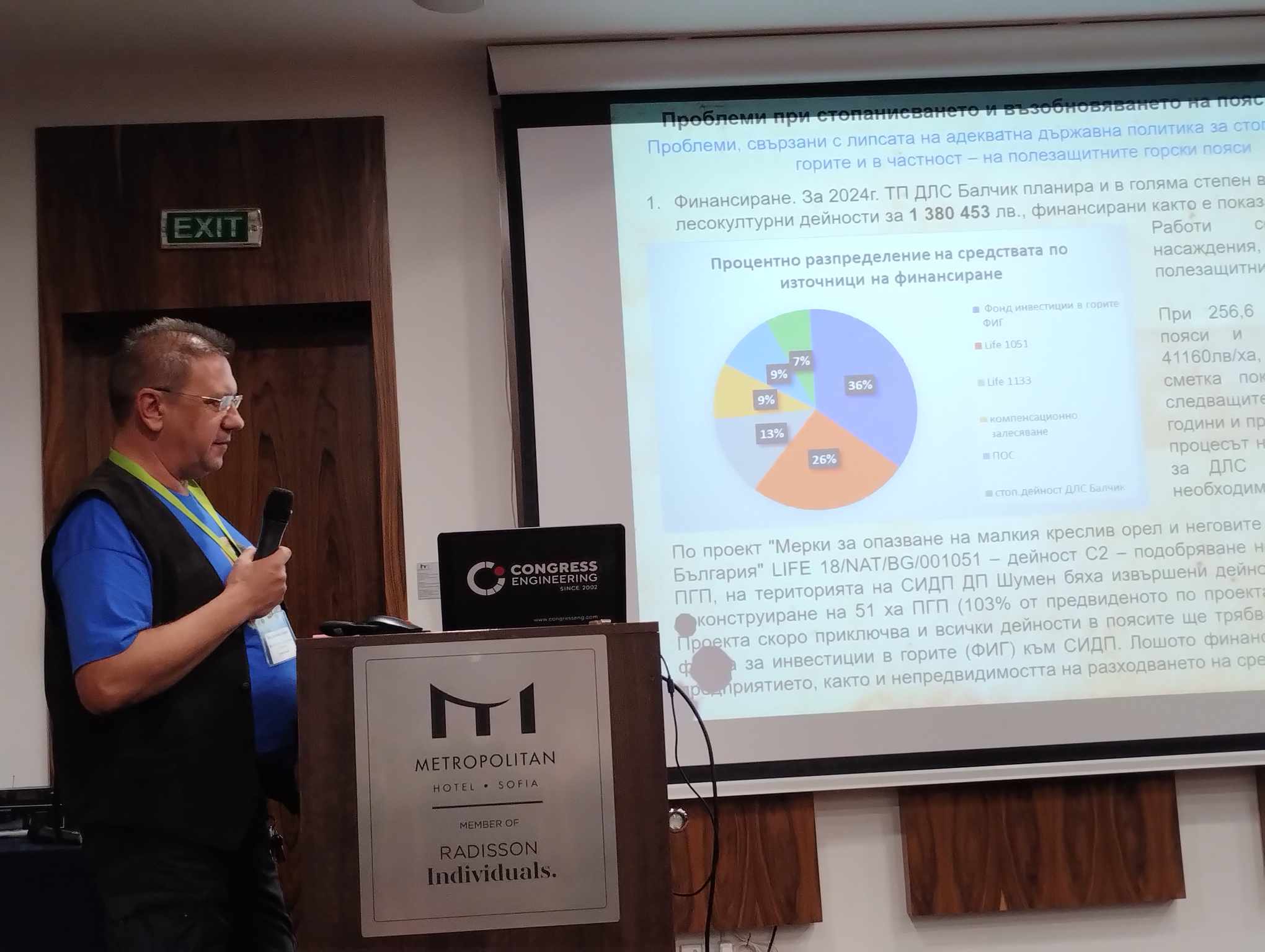
Eng. R. Radev: The protective belts need to be restored.
Creating 1 decare of new protective forest belt costs 4,116 leva, which includes: shredding of logging residues, grinding with a shredder, soil preparation, purchasing seedlings, afforestation, cultivation, and more. At the same time, the revenue from timber from the same area, according to the price list, is 926.40 leva for ash and 489.22 leva for acacia. The data was presented by the deputy director of DLS-Balchik, Eng. Radislav Radev, during the international conference on „Restoration of Forest Habitats,“ organized by YZDP and WWF, thanks to a project under the EU LIFE program. Radev commented to the forum participants that it is impossible to create new belts solely with funds from the dried belts, as this is a problem not only for the farms in Dobruja but for all others as well. He explained that the drying began in 2019, with the first affected species being American ash and elm, but in the following years, drought, high temperatures, and various pathogens and pests also affected oaks, hornbeam, mountain and field ash, and acacia.
„The concept is that state forest enterprises should cover all costs related to forest management from the revenues generated by timber harvesting. The activities for restoring the system of protective forest belts cannot and should not depend on timber harvesting, as this will lead to their destruction,“ stated Eng. Radislav Radev to his colleagues. He added that part of the dried belts has been reforested with funds from the projects „Forests of the Northeast“ and „Lands and Forests of the Eagle“ under the EU LIFE program, but to restore the network of belts important for agriculture and biodiversity, a complete change in policy, regulatory framework, and funding for various activities in the „Forests“ sector is needed. Eng. Radev explained that foresters from SIDP have made proposals for changes in the regulations and are awaiting their adoption.
„Restoration and the maintenance of protective belts are important for all of us due to global climate changes,“ said Radev. Dobrich is the region in Bulgaria with the lowest annual precipitation, at under 500 liters per square meter. This, combined with the strongest winds in Bulgaria, makes Dobrich an extremely dry place. The amount of precipitation in the area is close to the upper limit of semi-deserts (200-400 liters per square meter annually), which is why protective belts are crucial for preserving moisture and its fertility.
„In the past, dust storms were common, and if the belts are not restored now, ‘the granary of Bulgaria’ will once again face the problem of black soil being blown into the sea and the lack of any conditions for agriculture,“ emphasized engineer Radoslav Radev.
The conference „Restoration of Forest Habitats“ was organized by WWF Bulgaria in partnership with the Southwestern State Enterprise, with experts from seven European countries participating in the forum to discuss important topics related to forest fires, drought, extreme temperatures, and the possibilities for restoring forest habitats, which will help mitigate the effects of climate change.



